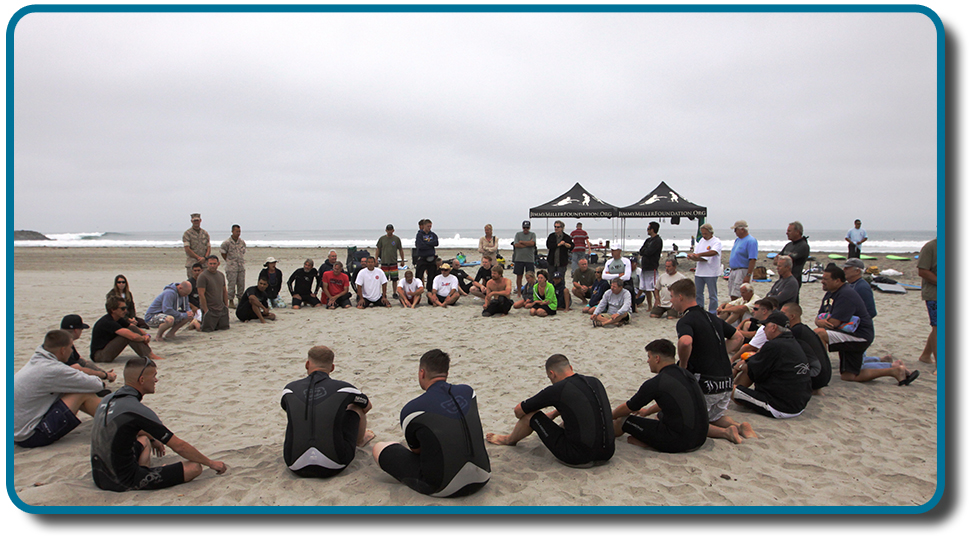Introduction
- Page ID
- 76988

What comes to mind when you think about therapy for mental health issues? You might picture someone lying on a couch talking about his childhood while the therapist sits and takes notes, à la Sigmund Freud. But can you envision a therapy session in which someone is wearing virtual reality headgear to conquer a fear of snakes?
In this chapter, you will see that approaches to therapy include both psychological and biological interventions, all with the goal of alleviating distress. Because psychological problems can originate from various sources—biology, genetics, childhood experiences, conditioning, and sociocultural influences—psychologists have developed many different therapeutic techniques and approaches. The Ocean Therapy program shown in Figure 16.1 uses multiple approaches to support the mental health of veterans in the group.
There are many misconceptions and assumptions about therapy and treatment. In the same way that mental health and psychological disorders are often misunderstood and may be discounted, seeking help for problems can be a difficult and scary time for people. There is no one method that works for everyone, and those seeking help are displaying strength and courage in their decision to address a highly stigmatized and challenging issue. The goal of treatment is not to change whom a person is, but to address symptoms and/or underlying conditions.


